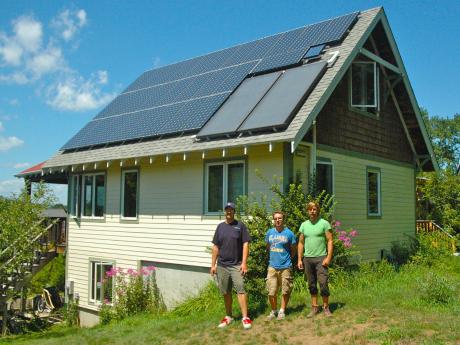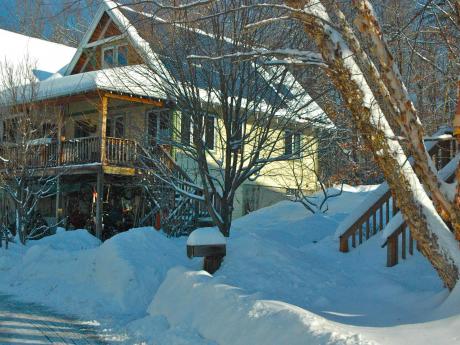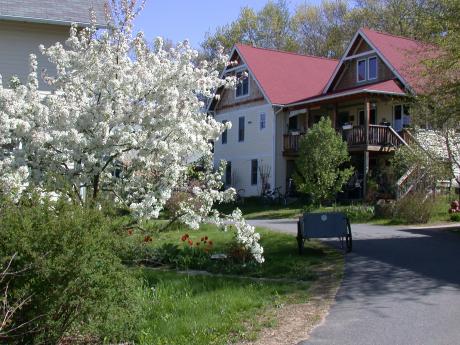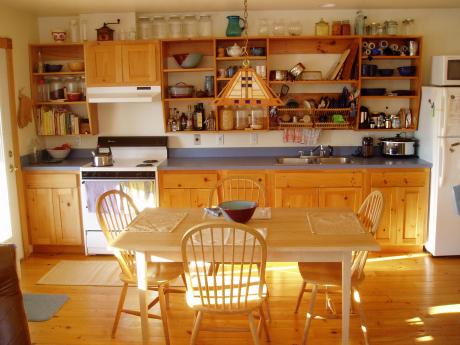Kraus-Fabel Retrofit
Project Photo Gallery
Project Team
BE Boston Past Registrants Business Member Green Company Manager Member

BE Boston Past Registrants Business Member Green Company Manager Member
Mary Kraus is an architect and facilitator who has been working with cohousing communities throughout North America for the past thirty years. She uses a participatory process to help large client groups reach consensus on design decisions, all while strengthening their sense of connection and community. She has served on the boards of the Cohousing Network and the Northeast Sustainable Energy Association. Her work has been featured in green design books and on national television, and she was named one of the “Top Ten Green Architects of 2005” by Natural Home and Garden magazine. Mary lives at Pioneer Valley Cohousing, the first cohousing community to be completed on the east coast (in 1994); her daily experience living in her ecologically-designed neighborhood lends inspiration to her work with sustainable development.
Other Team Members
Center for Ecological Technology - air sealing
Northeast Solar - PV design & installation, solar hot water renovations
Ratings, Awards and Recognition
DESCRIPTION OF PROJECT:
One barrier to broader adoption of ZNE practice is the perception of ZNE as expensive and exotic. In this project we addressed this issue directly, demonstrating that ZNE renovation can be straightforward and practicable, providing qualitative improvements, significant savings in energy and carbon emissions, and excellent return on investment. We started with our small, simple, relatively efficient, sun-tempered home, our half of a cohousing duplex built in 1994. What would it take to make it ZNE? Answer: Much less than I had anticipated – and nothing fancy.
Our home was built “Energy Crafted”, with 7” dense-packed cellulose walls and tight construction. Our windows were reasonably good for the time – double-pane, argon-filled, low-e casements. A sealed-combustion propane-fired boiler provided heat and hot water. An exhaust-only ventilation system kept the air fresh. Most of the lighting was CFL. The design was compact and sunny, providing a comfortable living space with three bedrooms in about 1,000 square feet of finished area (1,596 SF conditioned space.) A solar hot water system, installed on our roof in 1999, was shared with our duplex-mates. Before our ZNE renovation, our electricity use averaged 300 kwh/month; yearly propane usage was about 300 gallons. A good starting point, but nothing spectacular.
The first step on our ZNE journey followed one of my favorite sustainable design maxims, “Don’t overlook the mundane”: we bought a new refrigerator, saving an estimated 40 kwh per month. Our path to a ZNE home included:
· Careful modeling to determine strategies
· Targeted air sealing (start with a sound envelope!)
· Reducing plug loads
· New air-source heat pump to replace propane boiler
· New HRV to replace exhaust-only ventilation
· Super-insulated electric water tank as new backup for solar hot water
· 5.9 kw PV array to cover all energy uses
With PVs now powering all systems – and in spite of a record-breaking winter – our home was net energy producing the first year: 430 kwh net annual production (1.2 kwh/day, 6.5% above load). With all of this in place, our household energy use declined by 23% (using kwh equivalents for the replaced propane).
Quick Facts
General
| Location | Amherst, Massachusetts |
|---|---|
| Building Type | One side of residential duplex |
| Project Type | Zero Energy |
| Basis of Performance Claim | Verified |
| Bedrooms | 3 |
| Bathrooms | 1.0 |
| Conditioned Floor Area | 1,200 sq ft |
| Total Cost of Project | $62,100 |
Energy Summary
| Energy Data Type | Verified |
|---|---|
| Renewable Energy System Type(s) | Photovoltaics |
| Ratings | |
| Net electricity usage (purchased) | 431 kWh/year |
| Annual renewable energy generated | 7,023 kWh/year |
Envelope and Mechanicals
| Subslab assembly |
1" XPS |
|---|---|
| Foundation wall assembly |
8" poured concrete wall with interior insulation. |
| Above grade wall assembly |
7” dense-packed cellulose |
| Door Assembly |
Existing insulated steel doors (Therma-Tru?) |






